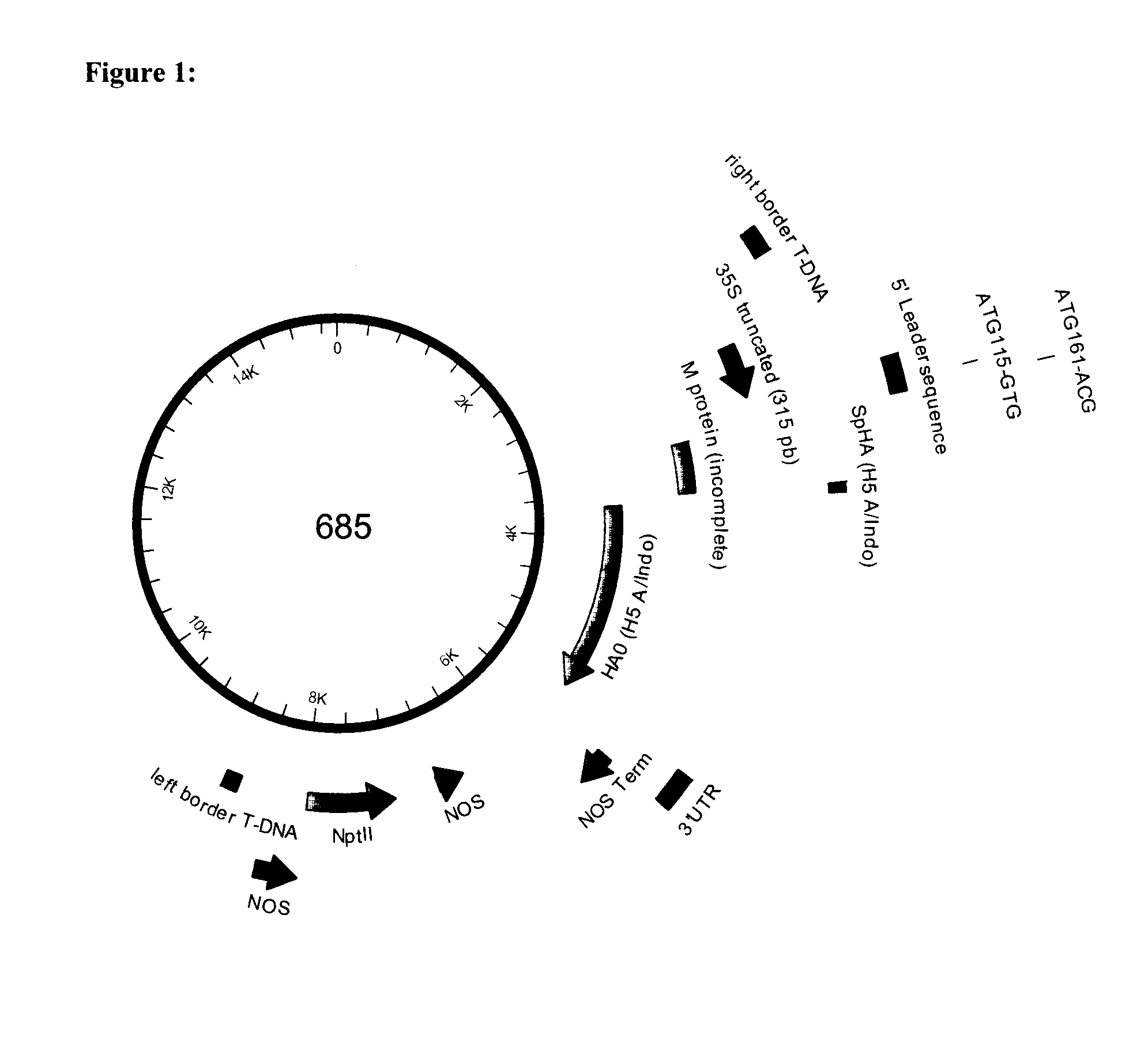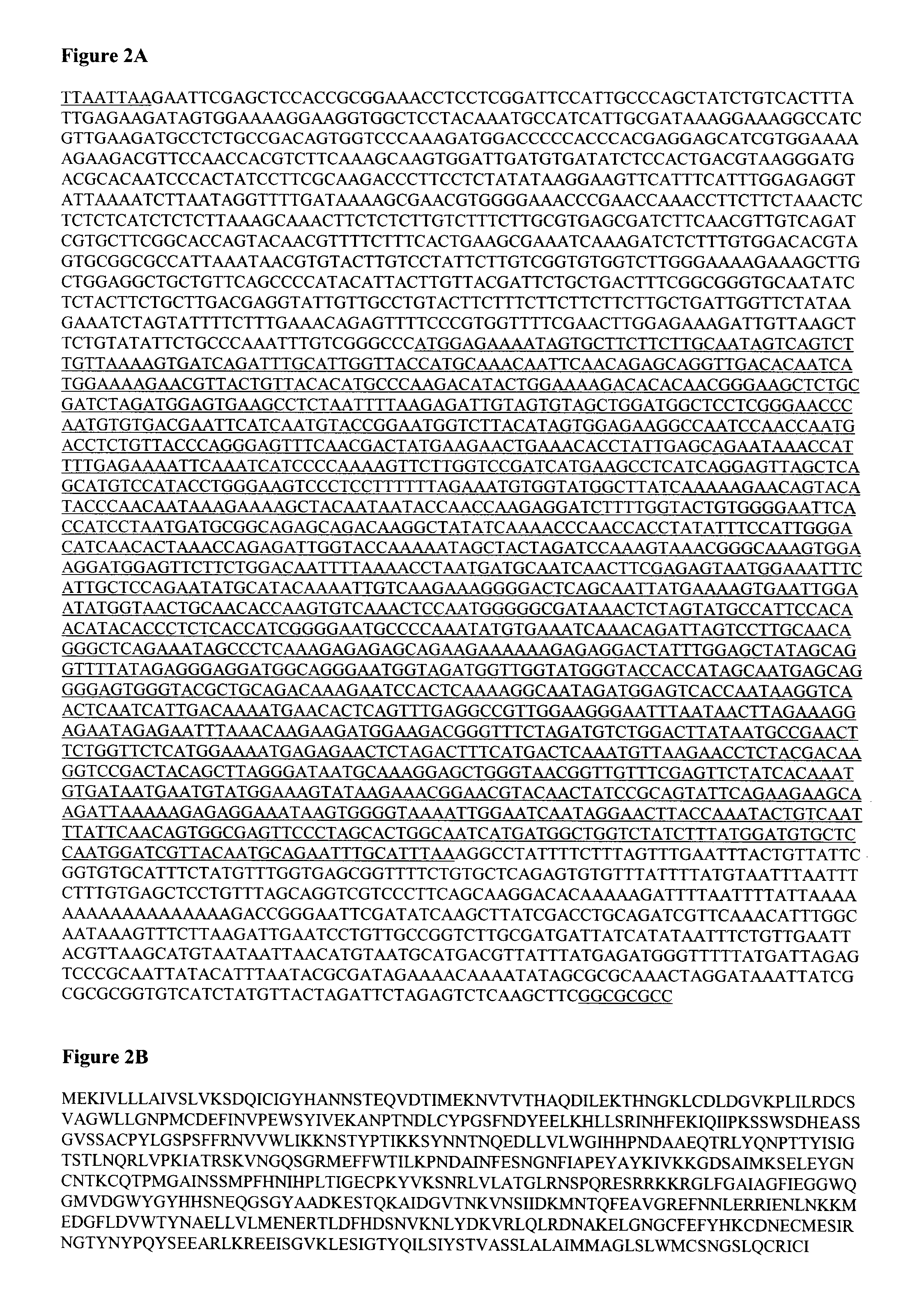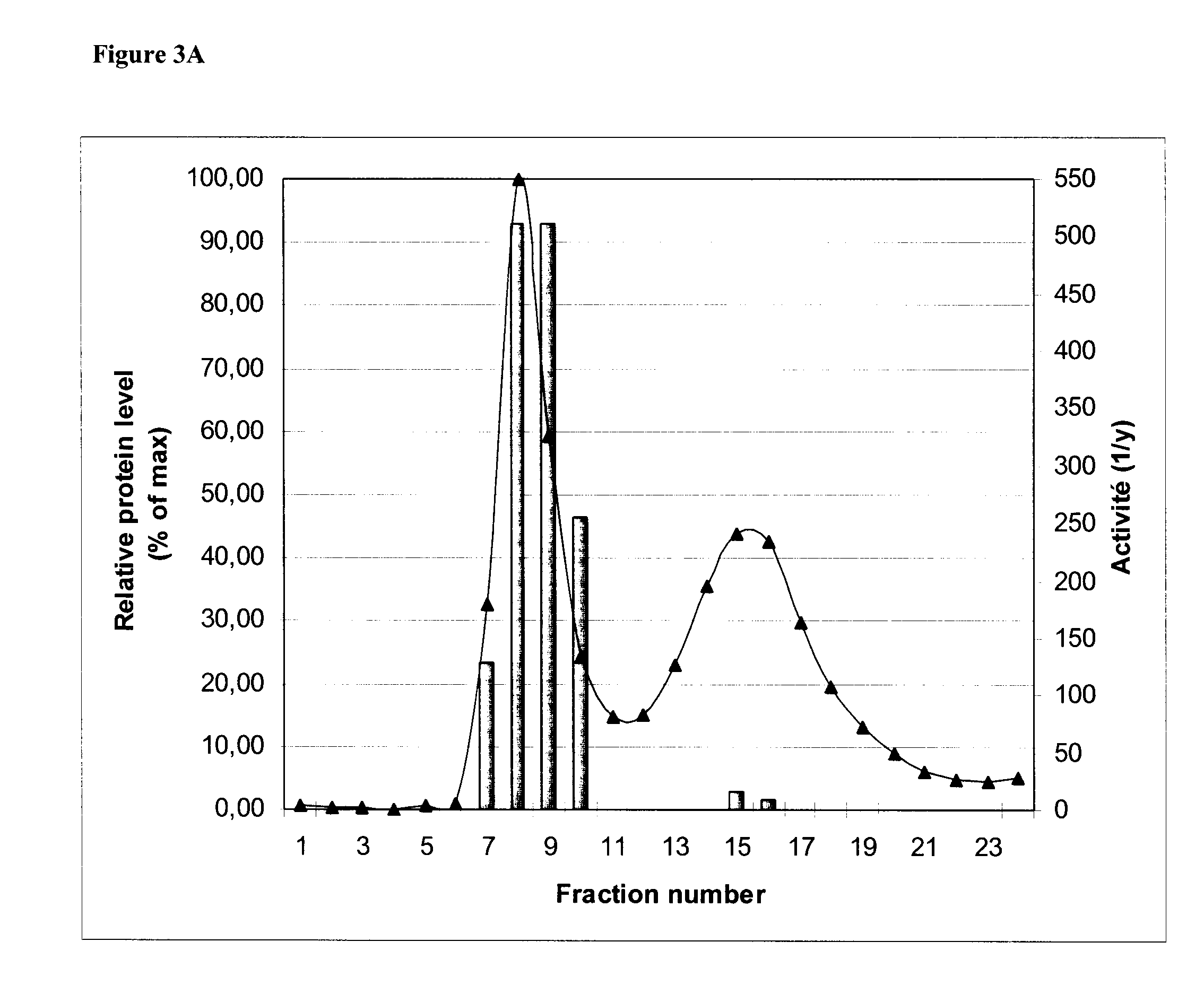Method of preparing plant-derived vlps
- Summary
- Abstract
- Description
- Claims
- Application Information
AI Technical Summary
Benefits of technology
Problems solved by technology
Method used
Image
Examples
example 1
Enzymatic Extraction of Plant Tissue Releases High Quantities of HA Having an Elevated Relative Activity
[0127]The quantity and relative activity of HA obtained from the present enzymatic extraction method were compared with that of HA obtained from common mechanical extraction methods. N. benthamiana plants were infiltrated with AGL1 / 685 and the leaves were harvested after a five to six-day incubation period. Leaf homogenates were prepared as follows: Two grams of leaves were homogenized with a Polytron homogenizer; 4 g of leaves were ground with a mortar and a pestle; and 25 kg of leaves were homogenized with a COMITROL™ processor (Urschel Laboratories) in an extraction buffer (50 mM Tris, 150 mM NaCl pH 8.0, ratio of 1:1 w / v). Enzymatic extraction was carried as follow: Twenty grams of harvested leaves were subjected to digestion with Macerozyme pectinases and Onozuka R-10 cellulases as described above. Following digestion, leaf debris were removed by filtration (nylon filter, 250...
example 2
Enzymatic Digestion of Plant Tissue Releases HA Organized into VLPs
[0129]A combination of differential centrifugation and size exclusion chromatography (SEC) was used to demonstrate that the HA obtained by the enzymatic extraction method described herein were organized as VLPs. N. benthamiana plants were agroinfiltrated with AGL1 / 685 as described in Example 1. Leaves were collected from the plants 6 days post-infiltration, cut into ˜1 cm2 pieces and then digested, coarse-filtered and centrifuged as described in Example 1.
[0130]The clarified samples were then centrifuged at 70,000×g to allow for segregation of VLPs. The centrifugation pellet, containing the VLPs, was gently resuspended in 1 / 50 volume of Phosphate buffered saline (PBS; 0.1M sodium phosphate, 0.15M NaCl pH 7.2) before being loaded on a SEC column.
[0131]SEC columns of 32 ml SEPHACRYL™ S-500 high resolution beads (S-500 HR: GE Healthcare, Uppsala, Sweden, Cat. No. 17-0613-10) were prepared with equilibration / elution buff...
example 3
Enzymatic Digestion of Plant Tissue Releases HA-VLPs with Fewer Contaminants
[0135]N. benthamiana plants were agroinfiltrated with AGL1 / 685 as described in Example 1. Leaves were collected on day 6 post-infiltration, cut into ˜1 cm2 pieces, digested, coarse-filtered and centrifuged as described in Example 1.
[0136]The controlled enzymatic digestion of the leaves removed the cell walls, at least partially, thus allowing for the release of proteins and components presents in the space between the cell wall and the plasma membrane into the extraction medium. Since most intracellular proteins and components were still undamaged and contained within the mostly intact protoplasts, an initial centrifugation step allowed for their removal, thus providing a resulting solution comprising cell wall degrading enzymes, in addition of the extracellular plant proteins and components (apoplastic fraction), as shown in FIG. 4.
[0137]FIG. 4 shows a SDS-PAGE analysis of the resulting solution obtained fo...
PUM
| Property | Measurement | Unit |
|---|---|---|
| Volume | aaaaa | aaaaa |
| Volume | aaaaa | aaaaa |
| Volume | aaaaa | aaaaa |
Abstract
Description
Claims
Application Information
 Login to View More
Login to View More - R&D
- Intellectual Property
- Life Sciences
- Materials
- Tech Scout
- Unparalleled Data Quality
- Higher Quality Content
- 60% Fewer Hallucinations
Browse by: Latest US Patents, China's latest patents, Technical Efficacy Thesaurus, Application Domain, Technology Topic, Popular Technical Reports.
© 2025 PatSnap. All rights reserved.Legal|Privacy policy|Modern Slavery Act Transparency Statement|Sitemap|About US| Contact US: help@patsnap.com



